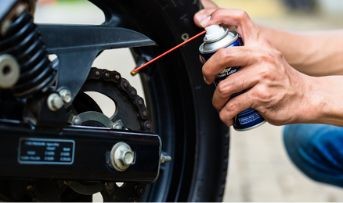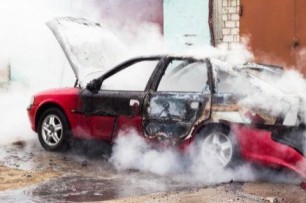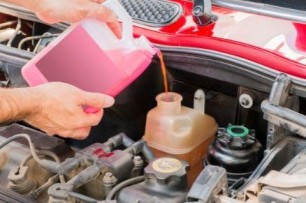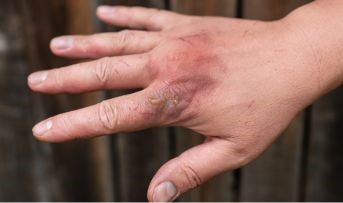General Insurance Blogs, Articles & Updates by - Magma HDI
Have us call you
- RENEW YOUR POLICY
- BUY NEW POLICY

Here are some tips for maintaining your bike’s drive chain to ensure its longevity
A bike drive chain consists of interconnected oval loops made of metal, forming a roller chain. The teeth of a sprocket gear mesh with the holes in the links of the chain. The mechanical force from the engine puts the bike chain in motion, which causes the bike's wheels to rotate. Hence, a bike's drive chain is an important part and must be handled properly.
A drive chain is usually the dirtiest part of our bike. It is oiled and greased, catching loads of dust and mud from the roads. Here are some tips for maintaining your bike's drive chain to ensure longevity.
1. Periodic cleaning:
Regular cleaning keeps it free from dirt build-up, rust, and breakage. You should regularly check your drive chain by lifting the rear wheel of your bike off the ground and manually rotating the drive chain. You should check every chain link and use a firm brush to clean them.
If you hear squeaking sounds from the chain while riding your bike, it is time for relubrication. Also, you should check for tight links that are not bending easily. Clean them properly and lubricate them to ensure their free movement. It will also prevent rust build-up.
2. Lubricant quality:
Always use a good quality lubricant to ensure its longevity. It should be specifically made for a bike's drive chain and should not be just any lubricant.
Dirt and mud damage the drive chain. The lubricant should be such that it should minimise the accumulation of dust and grime on the drive chain. Also, it should be long-lasting as the drive chain will wear down and get damaged if the lubricant is less or missing.
3. Do not over-lubricate:
Over-lubrication is harmful to the drive chain. It will attract more dust, mud, and concrete from the roads and damage the drive chain. To ensure smooth operation, you should always wipe off excess lubricants with a rag.
4. Thorough cleaning of the drive chain:
In case you ride your bike through muddy roads frequently or use it on rough terrains such as a mountain, you should remove the chain completely when it becomes excessively dirty. You can remove it yourself or seek the help of a mechanic.
Use a good quality chain solvent available in the market and soak your chain in it for the prescribed time. Then scrub hard to remove the dirty grime from the chain links. The solvent will do its job, and your chain will become clean and grime-free. Relubricate your drive chain once completely dry, and put it back in the bike.
5. Stretched chains:
Sometimes your bike's drive chain seems to stretch and become loose. This is because of normal wear and tear of the chain with usage. A loose drive chain cannot provide a good grip for the movement of the wheels and may even slip from its cog.
Check for a loose drive chain regularly, and get it fixed as soon as you find one. Ignoring it may cause further damage to the drive chain, and you will have to replace it.
The drive chain of your bike is a very important part of its smooth running. You must take good care of the chain to keep it in its best shape. Clean it regularly and keep it sufficiently lubricated to ensure its longevity.
Buying a good bike insurance policy for your bike is another important thing that you need to do to ensure a glitch-free ride. Buy bike insurance online after comparing it with the policies of several companies. You can do this from the comfort of your home or office without physically visiting any insurance company. Go for the best bike insurance policy as per your specific needs and enjoy complete protection, security, and peace of mind.
Click HERE to buy bike insurance online.
Disclaimer: The information provided above is for illustrative purposes only. To get more details, please refer to policy wordings and prospectus before purchasing a policy.

Tips for finding a short circuit in your car's system
An automobile comprises interconnected mechanical elements and complicated electrical wiring technologies. While we may enjoy contemporary comforts such as stereos, interior lighting, and even hologram speedometer readings as long as the electrical systems function correctly, all systems and components come to a standstill on account of short circuits.
A short circuit is a wiring fault because of a loose or defective wire that shunts electricity between courses before it hits its target. Although the signs of a short circuit are similar to those of an open circuit, the diagnosis is somewhat different. A short circuit may happen in various ways, and it's not always straightforward to locate and fix.
However, to understand how to discover a short circuit, we must first grasp how a perfectly working circuit operates. So here are a few tips for locating a short circuit in your car.
1. Make a map of your vehicle's circuit:
Remove the wire harness from your vehicle and turn to your Early Warning Device (EWD) to start diagnosing the circuit. Identify the various cables and circuits you're inspecting so you know where to go next. Wire colours should match the colours specified in the EWD. However, this may differ based on where you obtained your EWD.
2. Examine any exposed wiring:
One may also save time and effort by inspecting any exposed wires first. You may find a damaged or chafed wire that you can immediately begin mending. However, since most automobiles' wiring is tightly wrapped, you'll almost certainly need to try a few boards to figure out where the issue is.
3. Inspect all wires for faults:
If you feel a specific wire causes the problem, you may detach its connection at either the sensing or loading ends. Check your test indicator to see if it fades out or your multimeter to check if it stops buzzing. Next, you may remove your car's panelling and inspect the wires to see if you can pinpoint the problem.
4. Testing the 5V circuit:
In case the short is a 5-volt circuit, the Engine Control Module utilises it to regulate the gearbox and engine. You may unplug the battery first, then the ECM. It'll also enable you to identify electrical oscillations and approximately pinpoint the location of the short circuit.
5. One-by-one assess all the fuses:
Check the fuses and look for any easy, quick short circuits. Take a fuse at random and attach your testing indicator to its socket terminals. If a current is detected, the test LED will light up. If the test light does not ignite, it may suggest that electricity is not flowing to that fuse. This indicates that the damaged wire is along that route.
Knowing how to detect a short circuit may save you a lot of time and money while ensuring that your car is safe and perfectly operational. While it might be time-consuming, utilising the approach mentioned above should provide you with the knowledge you need to detect and fix any short circuit in your vehicle.
However, if you still face difficulty identifying the origin of the short circuit, visit the nearest garage. It is ideal to have your vehicle backed by insurance for even minor expenses like these. Search for the best car insurance in India and get yours right away to cover your vehicle against damages caused due to unexpected short circuits.
Find the best car insurance India for your vehicle HERE .
Disclaimer: The information provided above is for illustrative purposes only. To get more details, please refer to policy wordings and prospectus before purchasing a policy.

Top car care tips during the summer season
Be it the summer season, winters, or heavy monsoon, you need to take care of a few things to ensure your car's proper functioning and longevity. While external servicing and maintenance of your car are crucial, some particular factors ensure that your vehicle is up and running.
The summer season brings in good weather. But the drastic temperature rise can harm your car. In this space, we will discuss tips for caring for your vehicle during the summer season to keep it in good condition.
1. Cooling your engine:
Engines getting heated due to high temperatures are one of the significant causes of car breakdowns in summers. You can cool off the engine by using cooling systems in your car as recommended by the manufacturer.
2. Coolant refill:
To keep your cooling system in excellent working condition, make sure to refill the coolant according to the overflow status. According to most manufacturers, the cooling liquid mixture usually contains a fifty-fifty water to coolant ratio.
3. Inspect your car:
Some parts of your car are susceptible to heat damage and may deteriorate in high temperatures. Examine your vehicle, and replace any wear and tear or other damages as soon as possible. Also, keep an eye on the coolant leakages due to fuel expansion in summers.
4. Tyres:
Take a close look at your tyres. If they appear to be more inflated than required, get them checked. It's necessary to regularly monitor the air pressure levels in your tyres during the summers.
Failing to do so might risk a tyre blowout which can be a considerable safety risk, especially if you're on the road, examine your car tyres for signs of wear and tear and replace them if you find any damages.
5. Corrosion:
Once your vehicle reaches a specific limit, it is recommended to check your ignition system. The electrodes might corrode or wear out, so replacing the spark plugs is the solution to combat any ignition issues.
6. Air conditioning:
Examine the air conditioning of your car, especially in the summer season. Any defects leading to the disruption of the air conditioner can cause massive discomfort during your travels in such rising temperatures. Also, ensure that you inspect the compressor clutch while checking the air conditioning system.
7. Wipers:
The wipers of your car play an integral role while you're driving. They clear the windshield, making it easier to see while you drive. Replacing the wipers for the summer season with new ones would prepare you for the storms or rainy downpours midseason.
These were a few expert car care tips you will need to take care of your vehicle during the summer season. Apart from these tips, consider protecting your car against unprecedented circumstances. Emergencies like road accidents or damages to different parts of your vehicle can lead to heavy monetary expenses. To avoid paying a massive sum of money in such unforeseeable situations, you can explore various options and purchase car insurance online in India.
Click HERE to know more about how you can get car insurance online in India.
Disclaimer: The information provided above is for illustrative purposes only. To get more details, please refer to policy wordings and prospectus before purchasing a policy.

Here are the best tips for administering first aid for burns
First-aid tips and techniques have been a part of our educational curriculum since junior school. We all have learned the first-hand treatments one must do when there is a manageable injury or burn on our or someone else’s body. However, with time and as the level of injuries and diseases evolved, our knowledge about first aid falls short in terms of adequacy in the healing process.
Moreover, burns can happen anytime, primarily if operating around heavy machinery, fire, or in the kitchen. And it requires a lot of time to heal with proper care, ointments and medications, and extra precautions.
But what are some of the best ways to take care of these burns? What items should you include in your first aid kit to help you or someone else? Are there different degrees of burns, and which type of burns can first aid easily?
In this space, we’ll clarify all your doubts regarding first aid for burns. Let’s get started.
1. Minor or major:
A burn usually indicates tissue damage when the skin comes in contact with high flames, boiling water, sunburn/radiation, chemicals with corrosive properties, etc. Before starting the burn treatment, it is advised that you determine the degree of the burn to alter your treatment accordingly and determine whether immediate medical attention is needed.
A major burn occurs when the diameter of the burnt area is more than three inches, resulting in brown, black, and white patches with a dry and leather-like texture of the skin. In case of a minor burn, blisters appear on the burnt area, usually less than three inches in diameter. You will experience pain and inflammation, which might cause redness and soreness on the burnt site.
2. What you should NOT do:
Before we tell you the first aid tips you should follow, you need to be aware of the contamination of the sensitive and burnt part of the skin. Avoid using home remedies like butter, ice, water, etc., and immediately do not take any medications or remedies without consultation.
3. Must know first aid tips:
Remove jewellery items like rings, bangles, etc., from the burnt area. Cooling off the burn is essential. You can gently use cold water on the burnt portion and wet compresses to help with the inflammation and lower the pain. If you see any blisters, do not remove or poke them, as they protect the area from infection. If you see a blister pop, gently clean it with a disinfectant solution and cover it with an antibiotic cream. To ensure that the affected area does not dry out, use skin-friendly and chemical-free moisturisers. Aloe vera is a good option in such cases. Use sterile gauze and tapes to bandage the burn, but ensure that you do not tighten the grip of the bandage. Keeping it loose will prevent excessive pressure and alleviate pain.
You can take any doctor-recommended painkillers if the pain gets unbearable and causes too much discomfort. Avoid heavy tasks involving the burnt area, and avoid using fluffy cotton as tiny threads of cotton might stick to the burn risking the chance of an infection.
We hope you found the blog helpful. You must take care of your body and be extra cautious about your health to lead an extraordinary life. But sometimes, your efforts might fall short in unfortunate circumstances. To alleviate the monetary stress of such times, you must purchase the best personal accident insurance India which will provide you and your family with a reliable layer of financial protection.
Click HERE to learn more about the benefits of buying the best personal accident insurance India.
Disclaimer: The information provided above is for illustrative purposes only. To get more details, please refer to policy wordings and prospectus before purchasing a policy.


